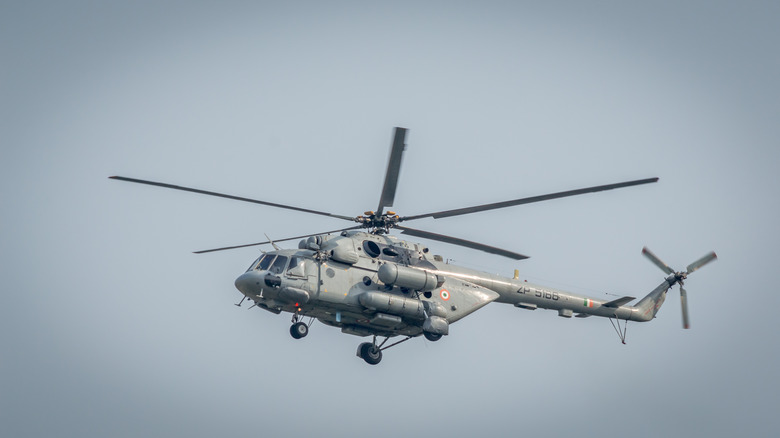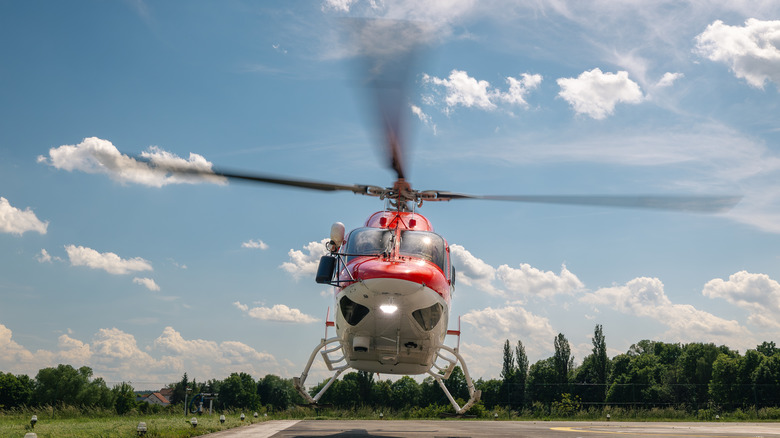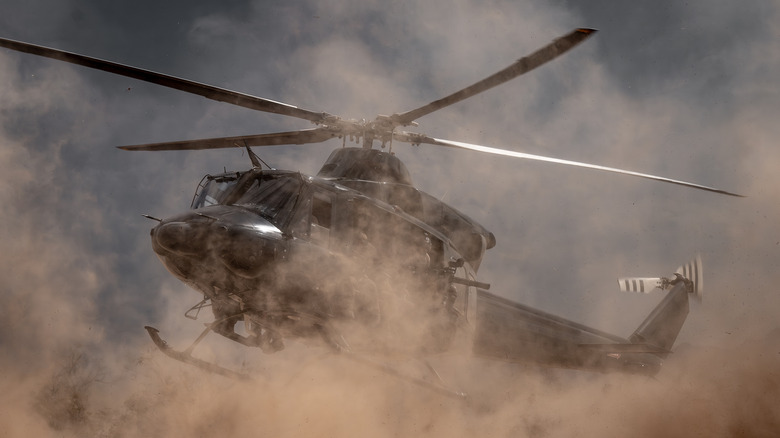Why Hovering A Helicopter Is One Of The Hardest Skills To Learn As A Pilot
For anyone who's never flown a helicopter, hovering might not seem like a big deal. Yet ask any pilot, and they'll tell you that holding a helicopter steady in the air is one of the toughest challenges in aviation. The moment you take your hand off the controls or shift your foot slightly, everything changes. The aircraft starts drifting, spinning, or wobbling in place, and it's not easy to get ahold of it again.
Helicopters have no built-in stability when they're hovering. There's no forward motion or air flowing over the wings to keep things steady as these things usually do when the helicopter is in motion. Instead, the aircraft constantly wants to move in every direction. To hold a fixed position in mid-air, you have to work all three primary controls at once: the cyclic (right hand), the collective (left hand), and the pedals (both feet). Every small adjustment matters, and it's a constant balancing act from start to finish. Once this technique is mastered, however, it feels easy to hover the helicopter in place.
Several factors influence how hard it is to hover
Hovering doesn't just test your skill — it tests your patience. There's a natural delay between when you move the controls and when the helicopter responds. That delay often makes beginners overcorrect, causing the aircraft to wobble or spin unexpectedly. The feedback loop is quick and unforgiving, and most new pilots end up in a loop of corrections that only increase the confusion. It's not uncommon for early lessons to feel more like a struggle for control than actual flying.
If you want to fly a helicopter, you'll have to master the hover because it's necessary to stall above ground before landing. However, a phenomenon called ground effect, in which the force of the helicopter's downwash pushing against the ground increases its lift, can add to the challenge. Natural forces like wind and the aircraft's rotor torque can also make it more difficult. For new pilots, it can take weeks of repetition just to stay in one spot without drifting, and even longer to do it calmly, consistently, and with confidence. Even fighter jet pilots can't hover in place for that long, although the physics behind hovering these aircraft is a bit different.
It takes practice to master the hover
Just like the Chinook pinnacle landing, in which the helicopter balances its two rear wheels on a cliff or other surface, hovering is one of those skills that looks effortless when done well but feels impossible when you're learning. That's because your right hand manages the cyclic to control side and forward movement, your left hand adjusts the collective to control lift, and your feet work the pedals to keep the nose from spinning. Basically, every limb is doing something different, all at the same time. And none of them stop moving, even for a second.
Muscle memory plays a big role in finally getting it right. Eventually, the pilot stops thinking about every input and just feels the corrections through instinct. The secret is to make small, gentle movements, as the jerky inputs will throw the helicopter off balance instantly. Over time, you learn to trust your sense of motion and make lighter, more calculated corrections. It's all about cooperating with the helicopter, rather than fighting against it. Once that clicks, hovering turns from a battle into a rhythm.


